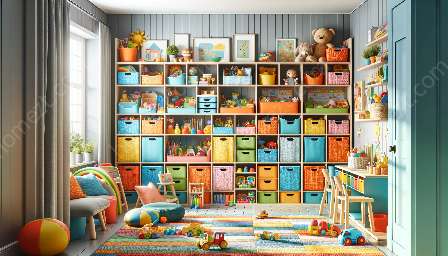Toy storage is an essential aspect of maintaining an organized and clutter-free home, and when it comes to specific age groups, it becomes even more important to tailor the storage solutions to their unique needs. From baby toys to those suitable for older children, finding the right toy storage solutions can help create an environment that is both functional and visually appealing.
Toy Organization
Before delving into age-specific toy storage solutions, it's essential to understand the principles of toy organization. Toy organization involves categorizing, sorting, and storing toys in a systematic manner to make them easily accessible and also to maintain a clutter-free living space. The key to effective toy organization is to create designated spaces for different types of toys and to involve children in the process. By involving children in the organization of their toys, they not only learn valuable skills but also take ownership of the process, making it more likely for them to keep the space tidy.
Infant and Toddler Toy Storage
Infants and toddlers often have a wide array of toys that serve different developmental purposes. When it comes to toy storage for this age group, it's important to focus on safety and accessibility. Open bins or baskets can be ideal for storing soft toys, stacking blocks, and larger toys, making it easy for children to access and put away items. Additionally, investing in toy storage with rounded edges and no sharp corners can enhance safety for younger children. Labeling bins with pictures or simple words can also help toddlers identify where to return toys after playtime.
Preschooler and School-Aged Children Toy Storage
Preschoolers and school-aged children have more complex toys and often demand a different level of organization. Investing in adjustable shelving units, toy chests, and storage containers with divided compartments can provide the flexibility needed to accommodate a variety of toys. Clear plastic containers can be useful for storing small toys like action figures, dolls, and building blocks, making it easy for children to see what's inside and maintain organization. Incorporating a labeling system that includes both words and images can empower children to take an active role in keeping their toys organized.
Teenage Toy Storage
While teenagers may not have traditional toys, they still have possessions that need to be organized. This age group often has a variety of hobbies, such as gaming, sports equipment, or artistic pursuits, which require storage solutions tailored to their specific interests. Consider incorporating storage solutions that account for their hobbies, such as wall-mounted shelves for displaying collections, multi-functional furniture with hidden storage, or specialized organizers for sports equipment.
Compatibility with Home Storage & Shelving
When considering toy storage solutions for specific age groups, it's important to ensure compatibility with home storage and shelving. Utilizing bookshelves, cubbies, and under-bed storage can not only provide designated spaces for toys but also contribute to the overall organization of the home. Opting for storage solutions that blend seamlessly with existing home decor and furniture can create a cohesive and aesthetically pleasing space. Additionally, incorporating closed storage solutions can help maintain a tidy appearance while keeping toys easily accessible.
Conclusion
Effective toy storage for specific age groups involves a thoughtful approach that considers the developmental needs of children and aligns with the overall organization of the home. By implementing tailored storage solutions for infants, toddlers, preschoolers, school-aged children, and teenagers, a harmonious balance of functionality and aesthetics can be achieved. Furthermore, compatibility with home storage and shelving ensures that toy organization seamlessly integrates with the overall design of the living space, creating a neat and visually appealing environment for both children and adults.


